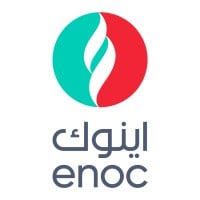
ENOC Company Cyber Security Posture
enoc.comEmirates National Oil Company Group (ENOC) is a leading integrated global oil and gas player operating across the energy sector value chain. A wholly owned company of the Government of Dubai, ENOC Group offers a diverse portfolio of assets operating across five business segments: Supply, Trading and Processing, Terminals, Marketing, Retail and Exploration and Production. Servicing thousands of customers across 60 markets, the Group employs a workforce of over 9,000 employees and is deploying its world-class customer service, latest innovations and technologies and best practices towards the UAE’s social and economic development. For further information, please visit: www.enoc.com
ENOC Company Details
enoc
6518 employees
818141.0
211
Oil and Gas
enoc.com
Scan still pending
ENO_7388197
In-progress
Between 800 and 900
This score is AI-generated and less favored by cyber insurers, who prefer the TPRM score.
 ENOC Global Score
ENOC Global Score.png)

ENOC Company Scoring based on AI Models
| Model Name | Date | Description | Current Score Difference | Score |
|---|---|---|---|---|
| AVERAGE-Industry | 03-12-2025 | This score represents the average cybersecurity rating of companies already scanned within the same industry. It provides a benchmark to compare an individual company's security posture against its industry peers. | N/A | Between 800 and 900 |
ENOC Company Cyber Security News & History
| Entity | Type | Severity | Impact | Seen | Url ID | Details | View |
|---|---|---|---|---|---|---|---|
| ENOC | Cyber Attack | 100 | 6 | 12/2022 | ENO223731222 | Link | |
Rankiteo Explanation : Attack threatening the economy of a geographical regionDescription: A significant BEC fraud that targets Middle Eastern-based businesses and people has been discovered. The effort has grown to include a new group of phishing domains that were created using the same name patterns as a prior campaign that was detected in July. The collection of phishing websites uses several forms of baits, including phoney employment offers, investment possibilities, vendor registration, and contract bidding, to target contractors in the UAE. Ninety percent of the 35 phishing domains examined target the Emirates National Oil Company, Sharjah National Oil Corporation, and Abu Dhabi National Oil Company (ADNOC) (ENOC). In order to deceive users, some domains have simply an email server (often provided by Zoho) active, some have duplicated the content of reputable companies, and some domains reroute to reputable domains. Threat actors behind this campaign are deliberately purchasing and registering domains with keywords that are similar to those of domains belonging to real businesses. The campaign also makes use of pre-stored static web pages with comparable templates to make it resistant to takedowns. If a domain is banned, these templates are uploaded to another domain. | |||||||
ENOC Company Subsidiaries

Emirates National Oil Company Group (ENOC) is a leading integrated global oil and gas player operating across the energy sector value chain. A wholly owned company of the Government of Dubai, ENOC Group offers a diverse portfolio of assets operating across five business segments: Supply, Trading and Processing, Terminals, Marketing, Retail and Exploration and Production. Servicing thousands of customers across 60 markets, the Group employs a workforce of over 9,000 employees and is deploying its world-class customer service, latest innovations and technologies and best practices towards the UAE’s social and economic development. For further information, please visit: www.enoc.com
Access Data Using Our API

Get company history
.png)
ENOC Cyber Security News
ICE Lodges Detainers Against Violent Aliens Over Corpse Rape, Shooting Spree
Felix Rojas, an alien who illegally entered the country multiple times dating back to 1998, was arrested in New York City and has been charged ...
Cybersecurity jobs available right now: November 20, 2024
Here are the worldwide cybersecurity job openings available as of November 20, 2024, including on-site, hybrid, and remote roles.
NASA’s Advanced Enterprise Global Information Solutions Contract Team Enhances Agency Cybersecurity
The contract terms are for a two-year base period that expired in 2023, a one-year option expiring in April 2025 and seven one-year award terms.
Dubai Electronic Security Center concludes its participation at GISEC Global 2025 by showcasing key national initiatives and honoring cybersecurity talents
DESC signed a Memorandum of Understanding with Moro Hub, aimed at strengthening digital security readiness across government entities.
CISO50 & FSA 2024 Awards honoured greatness in cybersecurity with a multitude of winners
The CISO 50 & FSA Awards evening was a resounding success, bringing together some of the brightest minds in cybersecurity and provided a one-of-a kind ...
Anonymous Sudan Claims Responsibility for DDoS Attack on Emirates National Oil Company
Anonymous Sudan has claimed responsibility for launching a DDoS attack on Emirates National Oil Company (ENOC), a UAE state-owned firm.
Abu Dhabi Police warns against clever phishing tactics
The UAE Cybersecurity Council has emphasised that phishing attacks succeed only when victims respond to fraudulent messages and deceptive offers.
Emirates National Oil Company
Emirates National Oil Company (ENOC), a wholly-owned entity of the Dubai Government, is a leading force in the economic diversification and sustainable ...
Cybersecurity tops agenda for utilities industry
Data from a survey conducted by Ernest and Young (EY) shows that 80% of utility companies have witnessed an increase in external threats, with ...

ENOC Similar Companies

Organisation Ourhoud
Sonatrach (Société Nationale pour la Recherche, la Production, le Transport, la Transformation, et la Commercialisation des Hydrocarbures s.p.a.) is an Algerian government-owned company formed to exploit the hydrocarbon resources of the country. Its diversified activities cover all aspects of Oil &
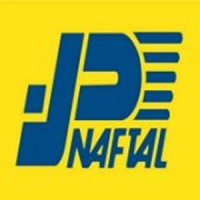
Naftal spa
NAFTAL est une Entreprise Nationale Algérienne filiale 100% de SONATRACH chargée de la commercialisation et la distribution des produits pétroliers. Elle est en charge de ses différentes stations services, distribue le Carburant en Algérie, Essence Normale, Essence Super, Essence Sans Plomb, Sirgha
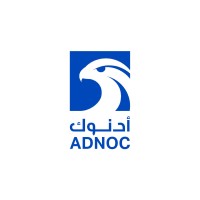
ADNOC Group
We are one of the world's leading energy producers, and a primary catalyst for Abu Dhabi’s growth and diversification. We operate across the entire hydrocarbon value chain, through a network of fully-integrated businesses, with interests that range from exploration, production, storage, refining a
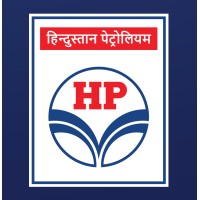
Hindustan Petroleum Corporation Limited
Hindustan Petroleum Corporation Limited (HPCL) is a Maharatna Central Public Sector Enterprise (CPSE) and a S&P Global Platts Top 250 Global Energy Company. HPCL has a strong presence in downstream hydrocarbon sector of the country with a sizable share in petroleum product marketing and also has bus

Tenaris
Tenaris is a leading supplier of tubes and related services for the world’s energy industry and certain other industrial applications. Our mission is to deliver value to our customers through product development, manufacturing excellence, and supply chain management. Tenaris employees around the wor
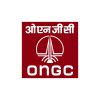
Oil and Natural Gas Corporation Ltd
Maharatna ONGC is the largest producer of crude oil and natural gas in India, contributing around 70 per cent of Indian domestic production. The crude oil is the raw material used by downstream companies like IOC, BPCL, HPCL to produce petroleum products like Petrol, Diesel, Kerosene, Naphtha, Cooki

Frequently Asked Questions (FAQ) on Cybersecurity Incidents
ENOC CyberSecurity History Information
Total Incidents: According to Rankiteo, ENOC has faced 1 incidents in the past.
Incident Types: The types of cybersecurity incidents that have occurred include ['Cyber Attack'].
Total Financial Loss: The total financial loss from these incidents is estimated to be {total_financial_loss}.
Cybersecurity Posture: The company's overall cybersecurity posture is described as Emirates National Oil Company Group (ENOC) is a leading integrated global oil and gas player operating across the energy sector value chain. A wholly owned company of the Government of Dubai, ENOC Group offers a diverse portfolio of assets operating across five business segments: Supply, Trading and Processing, Terminals, Marketing, Retail and Exploration and Production. Servicing thousands of customers across 60 markets, the Group employs a workforce of over 9,000 employees and is deploying its world-class customer service, latest innovations and technologies and best practices towards the UAE’s social and economic development. For further information, please visit: www.enoc.com.
Detection and Response: The company detects and responds to cybersecurity incidents through {description_of_detection_and_response_process}.
Incident Details
Incident 1: Ransomware Attack
Title: {Incident_Title}
Description: {Brief_description_of_the_incident}
Date Detected: {Detection_Date}
Date Publicly Disclosed: {Disclosure_Date}
Date Resolved: {Resolution_Date}
Type: {Type_of_Attack}
Attack Vector: {Attack_Vector}
Vulnerability Exploited: {Vulnerability}
Threat Actor: {Threat_Actor}
Motivation: {Motivation}
Incident 2: Data Breach
Title: {Incident_Title}
Description: {Brief_description_of_the_incident}
Date Detected: {Detection_Date}
Date Publicly Disclosed: {Disclosure_Date}
Date Resolved: {Resolution_Date}
Type: {Type_of_Attack}
Attack Vector: {Attack_Vector}
Vulnerability Exploited: {Vulnerability}
Threat Actor: {Threat_Actor}
Motivation: {Motivation}
Common Attack Types: As of now, the company has not encountered any reported incidents involving common cyberattacks.
Identification of Attack Vectors: The company identifies the attack vectors used in incidents through {description_of_identification_process}.
Impact of the Incidents
Incident 1: Ransomware Attack
Financial Loss: {Financial_Loss}
Data Compromised: {Data_Compromised}
Systems Affected: {Systems_Affected}
Downtime: {Downtime}
Operational Impact: {Operational_Impact}
Conversion Rate Impact: {Conversion_Rate_Impact}
Revenue Loss: {Revenue_Loss}
Customer Complaints: {Customer_Complaints}
Brand Reputation Impact: {Brand_Reputation_Impact}
Legal Liabilities: {Legal_Liabilities}
Identity Theft Risk: {Identity_Theft_Risk}
Payment Information Risk: {Payment_Information_Risk}
Incident 2: Data Breach
Financial Loss: {Financial_Loss}
Data Compromised: {Data_Compromised}
Systems Affected: {Systems_Affected}
Downtime: {Downtime}
Operational Impact: {Operational_Impact}
Conversion Rate Impact: {Conversion_Rate_Impact}
Revenue Loss: {Revenue_Loss}
Customer Complaints: {Customer_Complaints}
Brand Reputation Impact: {Brand_Reputation_Impact}
Legal Liabilities: {Legal_Liabilities}
Identity Theft Risk: {Identity_Theft_Risk}
Payment Information Risk: {Payment_Information_Risk}
Average Financial Loss: The average financial loss per incident is {average_financial_loss}.
Commonly Compromised Data Types: The types of data most commonly compromised in incidents are {list_of_commonly_compromised_data_types}.
Incident 1: Ransomware Attack
Entity Name: {Entity_Name}
Entity Type: {Entity_Type}
Industry: {Industry}
Location: {Location}
Size: {Size}
Customers Affected: {Customers_Affected}
Incident 2: Data Breach
Entity Name: {Entity_Name}
Entity Type: {Entity_Type}
Industry: {Industry}
Location: {Location}
Size: {Size}
Customers Affected: {Customers_Affected}
Response to the Incidents
Incident 1: Ransomware Attack
Incident Response Plan Activated: {Yes/No}
Third Party Assistance: {Yes/No}
Law Enforcement Notified: {Yes/No}
Containment Measures: {Containment_Measures}
Remediation Measures: {Remediation_Measures}
Recovery Measures: {Recovery_Measures}
Communication Strategy: {Communication_Strategy}
Adaptive Behavioral WAF: {Adaptive_Behavioral_WAF}
On-Demand Scrubbing Services: {On_Demand_Scrubbing_Services}
Network Segmentation: {Network_Segmentation}
Enhanced Monitoring: {Enhanced_Monitoring}
Incident 2: Data Breach
Incident Response Plan Activated: {Yes/No}
Third Party Assistance: {Yes/No}
Law Enforcement Notified: {Yes/No}
Containment Measures: {Containment_Measures}
Remediation Measures: {Remediation_Measures}
Recovery Measures: {Recovery_Measures}
Communication Strategy: {Communication_Strategy}
Adaptive Behavioral WAF: {Adaptive_Behavioral_WAF}
On-Demand Scrubbing Services: {On_Demand_Scrubbing_Services}
Network Segmentation: {Network_Segmentation}
Enhanced Monitoring: {Enhanced_Monitoring}
Incident Response Plan: The company's incident response plan is described as {description_of_incident_response_plan}.
Third-Party Assistance: The company involves third-party assistance in incident response through {description_of_third_party_involvement}.
Data Breach Information
Incident 2: Data Breach
Type of Data Compromised: {Type_of_Data}
Number of Records Exposed: {Number_of_Records}
Sensitivity of Data: {Sensitivity_of_Data}
Data Exfiltration: {Yes/No}
Data Encryption: {Yes/No}
File Types Exposed: {File_Types}
Personally Identifiable Information: {Yes/No}
Prevention of Data Exfiltration: The company takes the following measures to prevent data exfiltration: {description_of_prevention_measures}.
Handling of PII Incidents: The company handles incidents involving personally identifiable information (PII) through {description_of_handling_process}.
Ransomware Information
Incident 1: Ransomware Attack
Ransom Demanded: {Ransom_Amount}
Ransom Paid: {Ransom_Paid}
Ransomware Strain: {Ransomware_Strain}
Data Encryption: {Yes/No}
Data Exfiltration: {Yes/No}
Ransom Payment Policy: The company's policy on paying ransoms in ransomware incidents is described as {description_of_ransom_payment_policy}.
Data Recovery from Ransomware: The company recovers data encrypted by ransomware through {description_of_data_recovery_process}.
Regulatory Compliance
Incident 1: Ransomware Attack
Regulations Violated: {Regulations_Violated}
Fines Imposed: {Fines_Imposed}
Legal Actions: {Legal_Actions}
Regulatory Notifications: {Regulatory_Notifications}
Incident 2: Data Breach
Regulations Violated: {Regulations_Violated}
Fines Imposed: {Fines_Imposed}
Legal Actions: {Legal_Actions}
Regulatory Notifications: {Regulatory_Notifications}
Regulatory Frameworks: The company complies with the following regulatory frameworks regarding cybersecurity: {list_of_regulatory_frameworks}.
Ensuring Regulatory Compliance: The company ensures compliance with regulatory requirements through {description_of_compliance_measures}.
Lessons Learned and Recommendations
Incident 1: Ransomware Attack
Lessons Learned: {Lessons_Learned}
Incident 2: Data Breach
Lessons Learned: {Lessons_Learned}
Incident 1: Ransomware Attack
Recommendations: {Recommendations}
Incident 2: Data Breach
Recommendations: {Recommendations}
Key Lessons Learned: The key lessons learned from past incidents are {list_of_key_lessons_learned}.
Implemented Recommendations: The company has implemented the following recommendations to improve cybersecurity: {list_of_implemented_recommendations}.
References
Additional Resources: Stakeholders can find additional resources on cybersecurity best practices at {list_of_additional_resources}.
Investigation Status
Incident 1: Ransomware Attack
Investigation Status: {Investigation_Status}
Incident 2: Data Breach
Investigation Status: {Investigation_Status}
Communication of Investigation Status: The company communicates the status of incident investigations to stakeholders through {description_of_communication_process}.
Stakeholder and Customer Advisories
Incident 1: Ransomware Attack
Stakeholder Advisories: {Stakeholder_Advisories}
Customer Advisories: {Customer_Advisories}
Incident 2: Data Breach
Stakeholder Advisories: {Stakeholder_Advisories}
Customer Advisories: {Customer_Advisories}
Advisories Provided: The company provides the following advisories to stakeholders and customers following an incident: {description_of_advisories_provided}.
Initial Access Broker
Incident 1: Ransomware Attack
Entry Point: {Entry_Point}
Reconnaissance Period: {Reconnaissance_Period}
Backdoors Established: {Backdoors_Established}
High Value Targets: {High_Value_Targets}
Data Sold on Dark Web: {Yes/No}
Incident 2: Data Breach
Entry Point: {Entry_Point}
Reconnaissance Period: {Reconnaissance_Period}
Backdoors Established: {Backdoors_Established}
High Value Targets: {High_Value_Targets}
Data Sold on Dark Web: {Yes/No}
Monitoring and Mitigation of Initial Access Brokers: The company monitors and mitigates the activities of initial access brokers through {description_of_monitoring_and_mitigation_measures}.
Post-Incident Analysis
Incident 1: Ransomware Attack
Root Causes: {Root_Causes}
Corrective Actions: {Corrective_Actions}
Incident 2: Data Breach
Root Causes: {Root_Causes}
Corrective Actions: {Corrective_Actions}
Post-Incident Analysis Process: The company's process for conducting post-incident analysis is described as {description_of_post_incident_analysis_process}.
Corrective Actions Taken: The company has taken the following corrective actions based on post-incident analysis: {list_of_corrective_actions_taken}.
Additional Questions
General Information
Ransom Payment History: The company has {paid/not_paid} ransoms in the past.
Last Ransom Demanded: The amount of the last ransom demanded was {last_ransom_amount}.
Last Attacking Group: The attacking group in the last incident was {last_attacking_group}.
Incident Details
Most Recent Incident Detected: The most recent incident detected was on {most_recent_incident_detected_date}.
Most Recent Incident Publicly Disclosed: The most recent incident publicly disclosed was on {most_recent_incident_publicly_disclosed_date}.
Most Recent Incident Resolved: The most recent incident resolved was on {most_recent_incident_resolved_date}.
Impact of the Incidents
Highest Financial Loss: The highest financial loss from an incident was {highest_financial_loss}.
Most Significant Data Compromised: The most significant data compromised in an incident was {most_significant_data_compromised}.
Most Significant System Affected: The most significant system affected in an incident was {most_significant_system_affected}.
Response to the Incidents
Third-Party Assistance in Most Recent Incident: The third-party assistance involved in the most recent incident was {third_party_assistance_in_most_recent_incident}.
Containment Measures in Most Recent Incident: The containment measures taken in the most recent incident were {containment_measures_in_most_recent_incident}.
Data Breach Information
Most Sensitive Data Compromised: The most sensitive data compromised in a breach was {most_sensitive_data_compromised}.
Number of Records Exposed: The number of records exposed in the most significant breach was {number_of_records_exposed}.
Ransomware Information
Highest Ransom Demanded: The highest ransom demanded in a ransomware incident was {highest_ransom_demanded}.
Highest Ransom Paid: The highest ransom paid in a ransomware incident was {highest_ransom_paid}.
Regulatory Compliance
Highest Fine Imposed: The highest fine imposed for a regulatory violation was {highest_fine_imposed}.
Most Significant Legal Action: The most significant legal action taken for a regulatory violation was {most_significant_legal_action}.
Lessons Learned and Recommendations
Most Significant Lesson Learned: The most significant lesson learned from past incidents was {most_significant_lesson_learned}.
Most Significant Recommendation Implemented: The most significant recommendation implemented to improve cybersecurity was {most_significant_recommendation_implemented}.
References
Most Recent Source: The most recent source of information about an incident is {most_recent_source}.
Most Recent URL for Additional Resources: The most recent URL for additional resources on cybersecurity best practices is {most_recent_url}.
Investigation Status
Current Status of Most Recent Investigation: The current status of the most recent investigation is {current_status_of_most_recent_investigation}.
Stakeholder and Customer Advisories
Most Recent Stakeholder Advisory: The most recent stakeholder advisory issued was {most_recent_stakeholder_advisory}.
Most Recent Customer Advisory: The most recent customer advisory issued was {most_recent_customer_advisory}.
Initial Access Broker
Most Recent Entry Point: The most recent entry point used by an initial access broker was {most_recent_entry_point}.
Most Recent Reconnaissance Period: The most recent reconnaissance period for an incident was {most_recent_reconnaissance_period}.
Post-Incident Analysis
Most Significant Root Cause: The most significant root cause identified in post-incident analysis was {most_significant_root_cause}.
Most Significant Corrective Action: The most significant corrective action taken based on post-incident analysis was {most_significant_corrective_action}.
What Do We Measure?
















Every week, Rankiteo analyzes billions of signals to give organizations a sharper, faster view of emerging risks. With deeper, more actionable intelligence at their fingertips, security teams can outpace threat actors, respond instantly to Zero-Day attacks, and dramatically shrink their risk exposure window.
These are some of the factors we use to calculate the overall score:
Identify exposed access points, detect misconfigured SSL certificates, and uncover vulnerabilities across the network infrastructure.
Gain visibility into the software components used within an organization to detect vulnerabilities, manage risk, and ensure supply chain security.
Monitor and manage all IT assets and their configurations to ensure accurate, real-time visibility across the company's technology environment.
Leverage real-time insights on active threats, malware campaigns, and emerging vulnerabilities to proactively defend against evolving cyberattacks.




